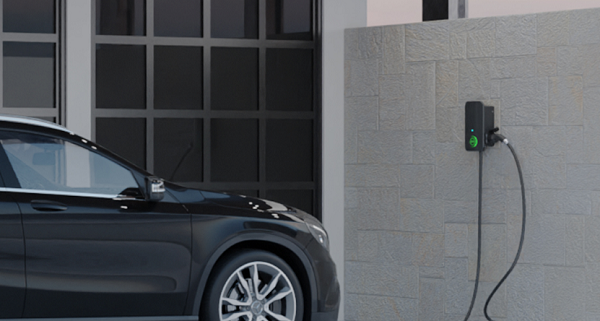Guide to 3-Phase 22kW Electric Vehicle (EV) Chargers
/0 Comments/in Industry News/by adminAs part of their effort towards sustainable energy development, some governments have begun developing efficient charging infrastructure. Fast electric vehicle chargers play an essential part here; therefore, suppliers are working on designing and manufacturing more of them; three-phase chargers with higher power output and faster charging capabilities are fulfilling users’ increasing needs for fast-charging EVs.
This article provides an in-depth examination of three-phase 22 kW charging. It also details why it has become an essential element in the electric vehicle field. What exactly is three-phase 22kW EV charging?
What is 3-Phase 22kW EV Charging?
Three-phase 22kW charging refers to the method of charging electric vehicles using 22kW three-phase AC power. Three-phase chargers utilize multiple phases to supply energy, providing higher power output while charging vehicles faster than single-phase chargers – thus giving rise to their nickname as fast chargers for electric vehicle charging stations.
Three-phase chargers are widely utilized at commercial, industrial, and public charging stations due to their fast charging speed and efficient power distribution characteristics. Three-phase power supplies are often installed in parking lots dedicated to electric vehicle parking lots due to their efficiency. Three-phase charging not only adds convenience when using electric vehicles, but it also helps decrease fossil fuel dependence.
- Three-phase power: Three-phase power has a more balanced distribution and higher power than single-phase power.
- Rated Power (22 kW): Rated Power refers to the maximum output of a charging station and represents its rate of energy delivery to electric vehicle batteries, as indicated by increased charging processes when operating at higher rated powers.
- Application Scenarios: Due to their fast charging speed, three-phase 22 kW charging stations are often used as commercial and public EV chargers to meet commercial charging solutions’ demands. Their rapid charging speed contributes significantly towards operational efficiencies within charging operators by significantly decreasing charging time – ultimately contributing towards operational efficiencies within charging operators themselves.
- Charging Times: Charging times vary when using a three-phase 22 kW charger to charge electric vehicles, depending on battery capacity. While larger capacity batteries take longer to charge than lower power chargers, 22 kW charging rates can significantly shorten charging time when compared with traditional chargers.
How Fast Does a 3-Phase 22kW Electric Vehicle Charger Charge?
The speed of charging an EV depends on two key factors: charging power (measured in kilowatts, or kW), and battery capacity. Higher charging powers usually result in faster charges. DC chargers typically have 50kw to 150kw capacity while AC chargers tend to have lower capacities of between 1.4kW and 2.4KW for Level 1 chargers.
Charging a 24kwh EV battery using a 1.8kW level 1 charger would take 13.33 hours. By comparison, using 22 kW or 50 kW DC chargers only needs 1.1 hours or 0.48 hours to do the job.
Calculating charging time requires using a straightforward mathematical formula; use this guideline as a means of estimating the charging speed of your electric vehicle:
Charging Time (hours) = Battery Capacity (kWh) / Charging Power (kW).
Assuming you own an electric vehicle with a 65kWh battery and are charging with a 22kW charger:
Charging Time: 65kWh/22.4KW = 2.95 hours.
Please be aware that this calculation represents an ideal charging timeframe, while actual time spent charging can depend on variables like the initial state of the battery, charging efficiency, and gradual decrease in charging speed as the battery nears full capacity.
Can I Install a 22kW 3-Phase Electric Vehicle Charger at Home?
Home AC electric vehicle chargers typically range in power output from 3.7kW to 22KW; with most devices providing 7-11kilowatt charging – usually sufficient for daily needs. 22kW chargers may more often be seen used at public EV charging stations, so installing one in your home may not be a common practice – check with an electrician/EV charger installer first to see if your area qualifies!
Start by verifying if your home’s power supply can accommodate a 22 kW three-phase charger. If necessary, contact your electricity company or electrician to ensure your electrical system can deliver sufficient current and power.
- Electrical Safety: Before beginning installation of a high-power charger, your home electrical system must be sufficiently safe. Potential upgrades may include increasing wiring capacities and circuit breakers if necessary for the safe performance of electrical devices like chargers. Checking capacities as well as updating any necessary upgrades may help ensure proper functioning.
- Charger Model: Select a 22 kW three-phase charger compatible with your electric vehicle and can deliver sufficient charging speed, such as Joint. Consult an electric vehicle charger provider such as them if necessary. Joint is a renowned exporter and provider of electric vehicle chargers, offering vehicle charging stations, home energy storage solutions, smart streetlights and complementary LED outdoor lighting products among many others. Their global reach extends across 35 countries where they sell over 60,000 charging station products each year. Furthermore, Joint provides ODM/ODM services, and holds ISO 14001, and ISO 45001 Sedex certifications (Silver Award), making them one of the go-to EV charger manufacturers worldwide.
- Professional Installation: When it comes to installing a 22 kW three-phase charger, professional electricians should be hired as they will assess your power system and make sure it’s correctly installed according to all regulations and specifications of both the home electrical system and charging equipment.
conclusion
Three-phase 22 kW electric vehicle chargers represent an essential step toward creating a robust and efficient charging infrastructure. From commercial settings to homes, understanding their capabilities and considerations is vital for creating a smooth transition towards a sustainable and electric future.




Leave a Reply
Want to join the discussion?Feel free to contribute!